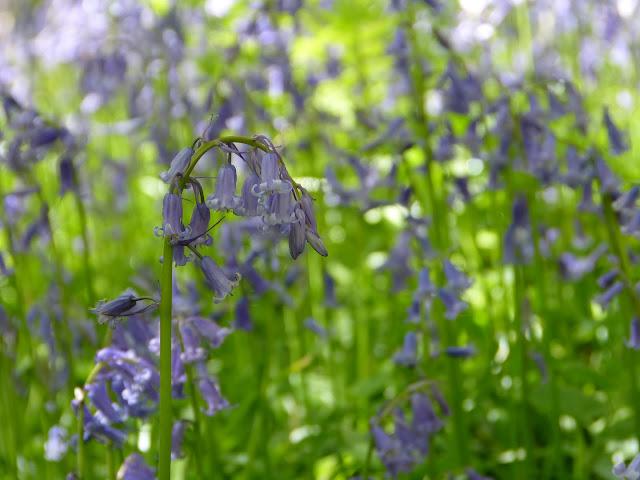The Norfolk Wildlife Trust’s
Foxley Wood is a place we have visited many times, but this is the first visit since we started our
challenge. The largest remaining area of ancient woodland in Norfolk, it has an amazing array plant and pollinator species, including ancient woodland indicator species.
It was one of these species that we had come to see in its full glory today: native English bluebells. The walk is always boggy and wet underfoot, but if you can persevere, it is well worth the effort. Little clumps of blue nodding heads herald what lies ahead, along with other pretty wildflowers, such as cuckoo flower and water avens, with its delicate flowers atop tall sinewy stems, their yellow anthers just visible under a cloak of dark red sepals. Then there are the showy blossoms of various trees in the
Rosaceae family, pink and white clusters irresistible to bees and their allies. More blue and purple blooms came from the upright flower spikes of bugle. As the blue tide began to swell, the bluebells were joined by greater stitchwort, tiny white flowers with five bifurcated petals. An out-of-place red campion stood tall and proud to be different above the sea of blue. Reaching the pinnacle of the ocean swamping the ground, hugging the trees, the fragrance of English bluebells is almost too much, but subtle enough that I could have happily stood forever in that sea, listening to the choir of woodland birds, breathing in the smell and gazing at all of those individual blue heads melting into one huge blue wave.
 |
| Water avens |
|
 |
| Great tit |
|
 |
| Red campion |
|
 |
| Bugle and water avens |
|







No comments:
Post a Comment